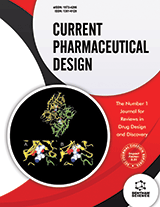Abstract
Background: Crystal engineering is dealing with the creation of new structures and new properties in drug molecules through inter-molecular interactions. Researchers of pharmaceutical sciences have used this knowledge to alter the structure of crystalline medications in order to remedy the problems of more than 40% of the new designed drugs which suffer from low solubility and consequently, low bioavailability which have limited their clinical application.
Methods: This review covers a broad spectrum of aspects of the application of crystal engineering in pharmaceutics and includes a comprehensive wide range of different techniques used in crystal engineering of active pharmaceutical ingredients (API) to compensate the low water solubility and bioavailability of drugs related specially to class II of biopharmaceutical classification system (BCS).
Results: These techniques include; crystalline habit modification, polymorphism, solvates and hydrates, cocrystals, surface modification, crystallization, spherical agglomeration, liquisolid crystals and solid dispersions which are introduced and discussed in this review article.
Conclusion: Each of these techniques has advantages and limitations which are emphasized on them.
Keywords: Crystal engineering, drug solubility, polymorphism, enhanced bioavailability, inter-molecular interactions, biopharmaceutical classification system (BCS).
Current Pharmaceutical Design
Title:Crystal Engineering for Enhanced Solubility and Bioavailability of Poorly Soluble Drugs
Volume: 24 Issue: 21
Author(s): Jaleh Varshosaz*, Erfaneh Ghassami and Saeedeh Ahmadipour
Affiliation:
- Department of Pharmaceutics, School of Pharmacy and Novel Drug Delivery Systems Research Centre, Isfahan University of Medical Sciences, Isfahan,Iran
Keywords: Crystal engineering, drug solubility, polymorphism, enhanced bioavailability, inter-molecular interactions, biopharmaceutical classification system (BCS).
Abstract: Background: Crystal engineering is dealing with the creation of new structures and new properties in drug molecules through inter-molecular interactions. Researchers of pharmaceutical sciences have used this knowledge to alter the structure of crystalline medications in order to remedy the problems of more than 40% of the new designed drugs which suffer from low solubility and consequently, low bioavailability which have limited their clinical application.
Methods: This review covers a broad spectrum of aspects of the application of crystal engineering in pharmaceutics and includes a comprehensive wide range of different techniques used in crystal engineering of active pharmaceutical ingredients (API) to compensate the low water solubility and bioavailability of drugs related specially to class II of biopharmaceutical classification system (BCS).
Results: These techniques include; crystalline habit modification, polymorphism, solvates and hydrates, cocrystals, surface modification, crystallization, spherical agglomeration, liquisolid crystals and solid dispersions which are introduced and discussed in this review article.
Conclusion: Each of these techniques has advantages and limitations which are emphasized on them.
Export Options
About this article
Cite this article as:
Varshosaz Jaleh *, Ghassami Erfaneh and Ahmadipour Saeedeh, Crystal Engineering for Enhanced Solubility and Bioavailability of Poorly Soluble Drugs, Current Pharmaceutical Design 2018; 24 (21) . https://dx.doi.org/10.2174/1381612824666180712104447
| DOI https://dx.doi.org/10.2174/1381612824666180712104447 |
Print ISSN 1381-6128 |
| Publisher Name Bentham Science Publisher |
Online ISSN 1873-4286 |
 38
38 6
6
- Author Guidelines
- Bentham Author Support Services (BASS)
- Graphical Abstracts
- Fabricating and Stating False Information
- Research Misconduct
- Post Publication Discussions and Corrections
- Publishing Ethics and Rectitude
- Increase Visibility of Your Article
- Archiving Policies
- Peer Review Workflow
- Order Your Article Before Print
- Promote Your Article
- Manuscript Transfer Facility
- Editorial Policies
- Allegations from Whistleblowers
- Announcements


























